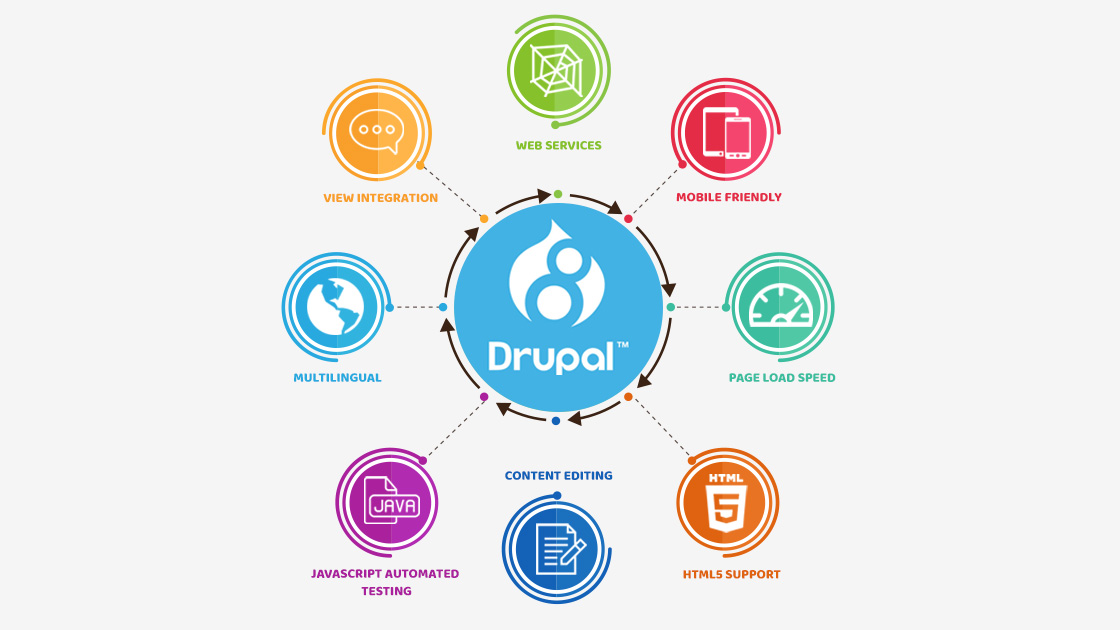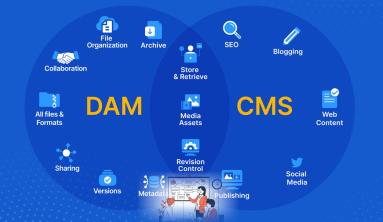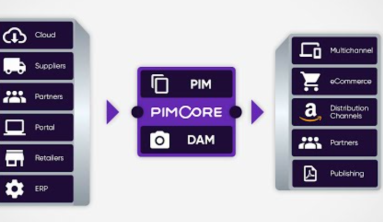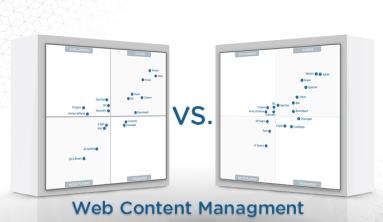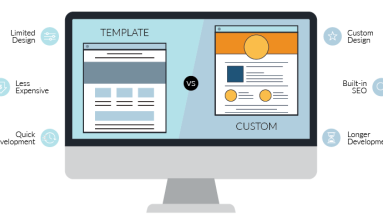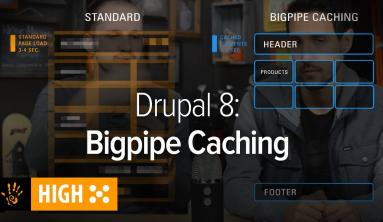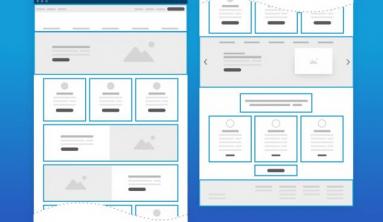If you’re a business or organisation researching whether Drupal may be a good fit for you, you’ve come to the right place. As an experienced Drupal web agency, we have put together this guide that covers everything you need to know about this popular content management software system. Drupal often sees new iterations; this guide highlights the Drupal features you should be aware of if you use this CMS regularly.
What is Drupal?
Although widely considered a Content Management System (CMS), Drupal is actually a Content Management Framework, on top of which you can build a tailored CMS. It’s an important distinction and one that makes Drupal rather special, compared to standard Content Management Systems.
Rather than being confined to the provided limits of a regular CMS, Drupal provides the framework for building your own, custom CMS, to your exact requirements and specifications. That’s not to say that you have to start from scratch with every development. As an open source project, Drupal has a significant developer community with “ready-made” distributions, modules, and themes. But what it does mean is that if what you want isn’t available, or what is available isn’t right for you, you have the option of building it yourself. You can define views, workflows, content types, fields and more, often through a point and click process.
What makes a good CMS?
So technical differences aside, and assuming you’re using Drupal as a system for web content management, what should you be looking for from a CMS?
A great CMS, will form the backbone of your digital presence.
Choosing the right CMS is not just a technical process but a commercial decision. Your decision needs to address immediate business problems and opportunities for the present, whilst at the same time being forward aware enough to consider your future digital roadmap.
When assessing content management software you’ll be considering exactly what the CMS needs to do functionally, who will be using it - and their level of technical skill, your content delivery channels, and much more - not to mention costs!
Is versatility important?

Drupal is just like an swiss army knife with multiple feature sets.
If you want your platform to help grow your business it’s not enough to just consider how your CMS will deliver web pages. Your CMS could potentially be utilised across many digital projects, for different applications and websites, all tied in with your sales, ecommerce, and with your marketing and content delivery channels.
Your CMS plays important and often differing roles for a variety of areas of your business. Teams across your organisation will have their own needs and requirements from your CMS, and that’s before you consider any public end users consuming your content or application.
When choosing the right CMS for your business, you’ll first need to address what it is you want to accomplish. You’ll need to gather requirements and expectations for a variety of teams, assess the priorities and importance of each, and then align those with the right CMS. Some of the questions you should be asking might be:
- Does your solution need to grow or change with your business?
- How, and who, is implementing the CMS?
- What hosting options are there?
- Are you serving local, national, or global audiences?
- What are the key capabilities and must-have features?
- Does the CMS need to integrate with other core business systems?
- Which users will be managing the system and their capabilities?
- What level of hosting and SLA's do you need?
- How will you measure success?
Must-have features of a CMS
Your CMS will no doubt need to provide a large array of functionality across numerous use cases. Whilst some of these may be unique to your organisation some of the core, must-have features you’ll require are;
- Intuitive and user friendly user interfaces: Your system may need to cater for a range of technical levels, from developers and marketeers, to content contributors who may be less tech savvy. Great interfaces improve efficiency, productivity, poor interfaces can leave users frustrated and reluctant to engage.
- Great content management tools: You’d expect this as an absolute minimum from content management software, but often the management and publication of management can be lacking. Good content editors that allow you to publish different content types such as blog articles, landing pages, or product highlights are a must have.
- Multi-language support: If you plan to deliver content in multiple languages you’ll want a CMS that not only supports character sets, but makes language variants easy to manage, and aligns with your multi-location and multilingual SEO requirements.
- Workflows and publishing control: You may have numerous people working on content with responsibilities spanning authoring, editing, and scheduling.
- SEO support baked in: If visibility on search engines is required, then built in support for your SEO efforts is important. You’ll want to know that your content management software not only supports your content optimisation efforts, but also creates clean, well-structured markup and search engine-friendly URLs.
- Security and support: This is one of the most important points in this list: ensure your data and your customer’s data is safe. Your brand reputation is a difficult thing to repair, so check what your CMS supports in the way of SSL, security updates, CDN (can help alleviate DDoS attacks), and has a good process for applying patches.
Key Features of Drupal 8
As explained earlier, the Framework Drupal utilises means that the “must-have” list above is almost entirely under your control. There are a number of key CMS Drupal features introduced in version 8 that means it can be used to build small sites as well as huge, large scale enterprise websites. Some of the largest, well known websites have used Drupal, including CBN News, Pfizer, the Australian Government, and Tesla.

Let’s take a look at some of Drupal 8’s highlights.
Architected for great mobile experiences
Drupal 8 was developed with mobile experience in mind. There are numerous contributed modules and themes for building mobile solutions. Drupal.org’s mobile guide is a great place to find mobile documentation and guidance. All of the built-in Drupal 8 themes have been built to be responsive and mobile friendly. Thanks again to the framework approach, Drupal can also be leveraged as the back end for mobile applications.
Great multilingual support
Drupal 8 provides superb multilingual support. Whilst the interface itself is available in a huge number of languages, Drupal 8 provides a number of core modules specifically built for multilingual and translation development. All content entities can be given a default language and then translated versions - straight out of the box!
Platform independent
Whilst you’ll more typically find Drupal configured with Linux, Apache, and with MySQL or PostgreSQL, Drupal can be just as at home on Windows, IIS and SQL Server.
Powerful taxonomy and menu structures
Drupal 8 provides a highly flexible taxonomy and menu system that allows you to unshackle your development from the more traditional and rigid content hierarchies. This opens up limitless possibilities for content categorisation and gives you complete control over your content relationships.
Workflow and content moderation
Content collaboration is made easy and manageable with built in workflow and moderation capabilities. You can build in steps for content revisions and approvals, and create simple or complex workflows that best suit your editorial requirements.
Decoupled Drupal for multichannel experiences
A decoupled CMS architecture separates the back and front end management of a website. This essentially creates one system for creating and storing content, and another (or many) separate one for delivering that content. After your content has been created in the back end, your single, or multiple, front-end systems can utilise APIs and web services to feed any device or channel.
Drupal is different
We love Drupal because it is different from many of the CMS options available today. We choose Drupal for many of our projects because we like that it is open source, there is no platform lock in, and it is an API and integrations first solution, with decoupling and headless capabilities.
What’s changed with Drupal 9?
On the face of it you could be excused for thinking not much has changed, and in one sense you might not be too wrong. However, that’s not unintentional. Major updates have been irksome and occasionally troublesome in the past. Drupal’s approach has shifted, meaning if you have kept your Drupal 8 instances fully up to date and removed deprecated code, the journey to Drupal 9 should be a lot smoother.

Drupal 8 relies on third-party dependencies (Teig, Guzzle, Symfony). Drupal has its support cycles for its core modules, and it's the dependencies on these third parties’ lifecycles that are a large part of the Drupal 9 release.
As well as “stripping off” all deprecated code from Drupal 8, Drupal 9 incorporates an upgrade to newer versions of Simfony and Twig.
Drupal 9 is also the first version to be backwards compatible. This is a major shift from previous versions. The “migration” from version 7 to version 8 caused developers many headaches, the same isn’t true for moving from Drupal 8 to Drupal 9.

